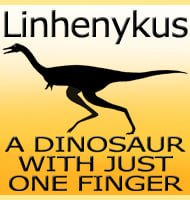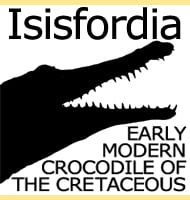In Depth
The holotype tooth of this genus was originally described by the German palaeontologist Werner Janensch in 1920 as belonging to the genus Labrosaurus. The first reassignment came about when Labrosaurus was declared to be a synonym of Allosaurus, but the teeth in question were not seen to be similar to those known for Allosaurus, so they were moved over to another Jurassic theropod called Ceratosaurus. Again the teeth were not a perfect match for this genus which led to them being considered to be of a different and hitherto unknown theropod, all the way until 2012 when the palaeontologist Eric Buffetaut established a new genus of spinosaurid dinosaur with them.
Because Ostafrikasaurus is based upon the description of a tooth there is a lot we don’t know about this dinosaur. For instance no one can say how big it was, what exactly it ate, and even though it has been classed as belonging to a spinosaurid, it might not have looked exactly as spinosaurids are so far known to. However it is the mere classification of Ostafrikasaurus that is important here, and for two reasons. First, the holotype tooth has been identified as coming from a late Jurassic era deposit, something that at the time of description and writing makes Ostafrikasaurus the oldest known spinosaurid. Before its description other spinosaurid genera including Spinosaurus, Baryonyx, Suchomimus, Irritator, Oxalaia, and Ichthyovenator amongst others were all identified as coming from early Cretaceous deposits that are many millions of years younger that the deposit for Ostafrikasaurus. The second important area for Ostafrikasaurus is the actual form of the teeth. The holotype tooth is not like the long and thin teeth that are adapted for spearing which are seen in later spinosaurid genera. Instead the holotype gets quite a bit broader at the base given it a form that is similar to the more general theropod tooth form. The tooth is serrated and has up to ten denticles every five millimetres on the distal side, thirteen denticles every five millimetres on the medial side. This is more than later spinosaurid which has led to the notion proposed by Buffetaut that the number of denticles on spinosaurid teeth reduced as the spinosaurids became more advanced. This essentially means that if and when other early spinosaurid genera are found, the older they are, the higher the number of teeth denticles they would be expected to have. The form of the holotype tooth is also the inspiration of the type species name, O. crassiserratus which translates to English as ‘thick serrated’.
As already mentioned without the discovery of a skull or a skeleton (ideally both) no one can say for certian what Ostafrikasaurus looked like or how it lived, though it is possible to make surmisations about what needs to be looked for. Spinosaurids are often described as having crocodile-like snouts, a very loose description given the way crocodiles can vary in form, but one that does illustrate how the snouts of spinosaurids are proportionately much longer than those of other more generic theropod dinosaurs. Ostafrikasaurus might have already developed the long snout characteristic of spinosaurids, it might have been short like an early theropod, or anywhere in-between. It is still uncertain if Ostafrikasaurus had the sensory snout features that have been proposed for other spinosaurid genera.
Spinosaurids, where the fore limbs have been preserved, have also been noted for having enlarged claws on their hands, and again Ostafrikasaurus might have already had this development, or had a form that was similar to but not yet as well developed. Ostafrikasaurus might have also been more of a generalist hunter rather than a specialist fish hunter, though even later more specialised genera such as Baryonyx are known to have eaten dinosaurs, though the circumstances for this are unknown (the dinosaur may have been scavenged rather than killed and then eaten).
The future of the genus Ostafrikasaurus may be a dubious one since the history of palaeontology has consistently proven that it is very difficult to attribute skeletal remains to a genus that is based only upon teeth. Though with that said, the genus Troodon was established on teeth long before skeletal remains were definitively proven to belong to it. Regardless of what the future may hold for the Ostafrikasaurus genus, the holotype tooth came from a dinosaur that would have lived in an ecosystem that saw the presence of other dinosaurs such as the stegosaur Kentrosaurus, the sauropods Dicraeosaurus and Giraffatitan and the theropod Elaphrosaurus.
Further Reading
- Spinosaurid teeth from the Late Jurassic of Tendaguru, Tanzania, with remarks on the evolutionary and biogeographical history of the Spinosauridae. - Eric Buffetaut - 2008.- An early spinosaurid dinosaur from the Late Jurassic of Tendaguru (Tanzania) and the evolution of the spinosaurid dentition. - Eric Buffetaut - 2012.









